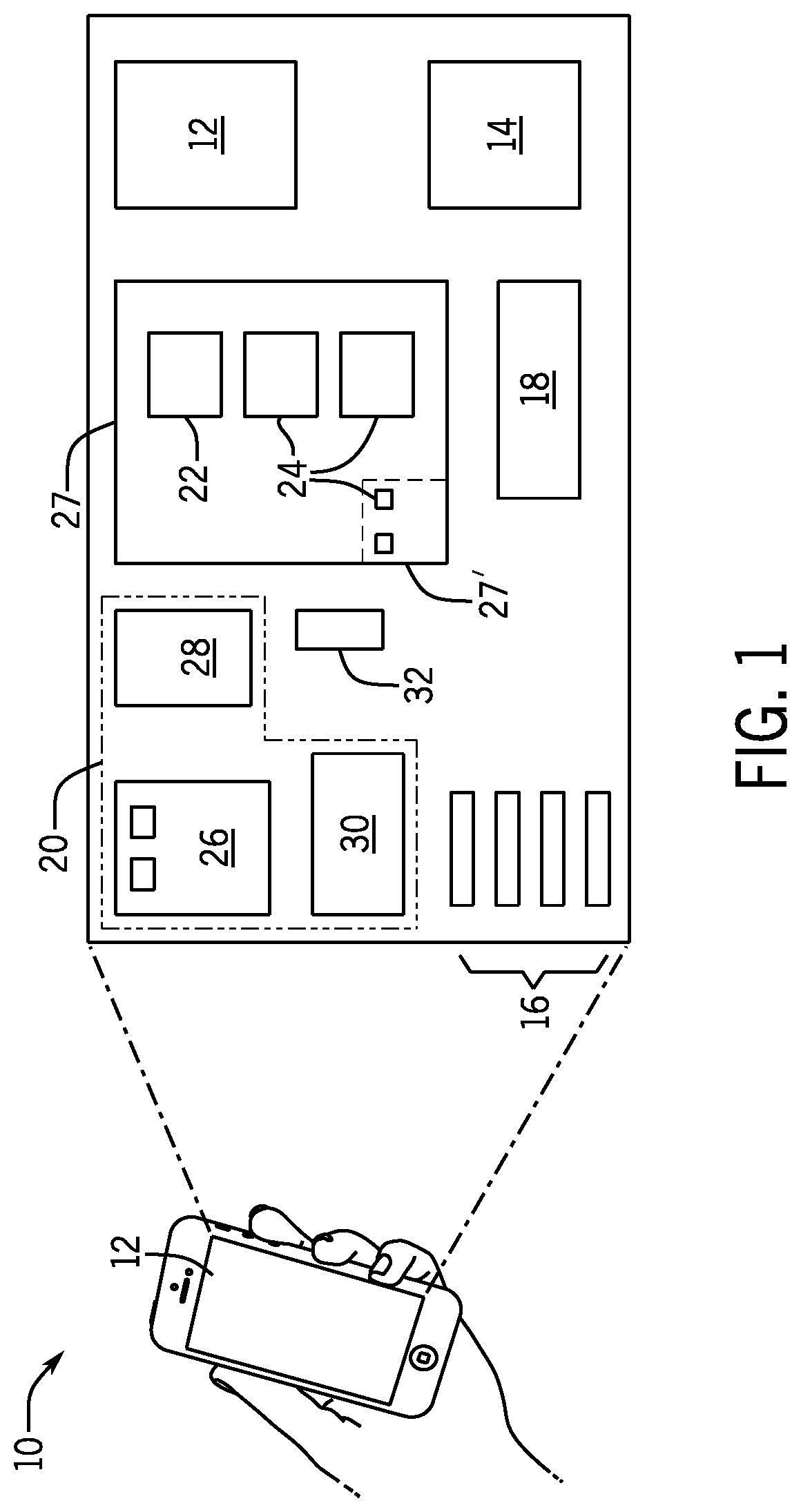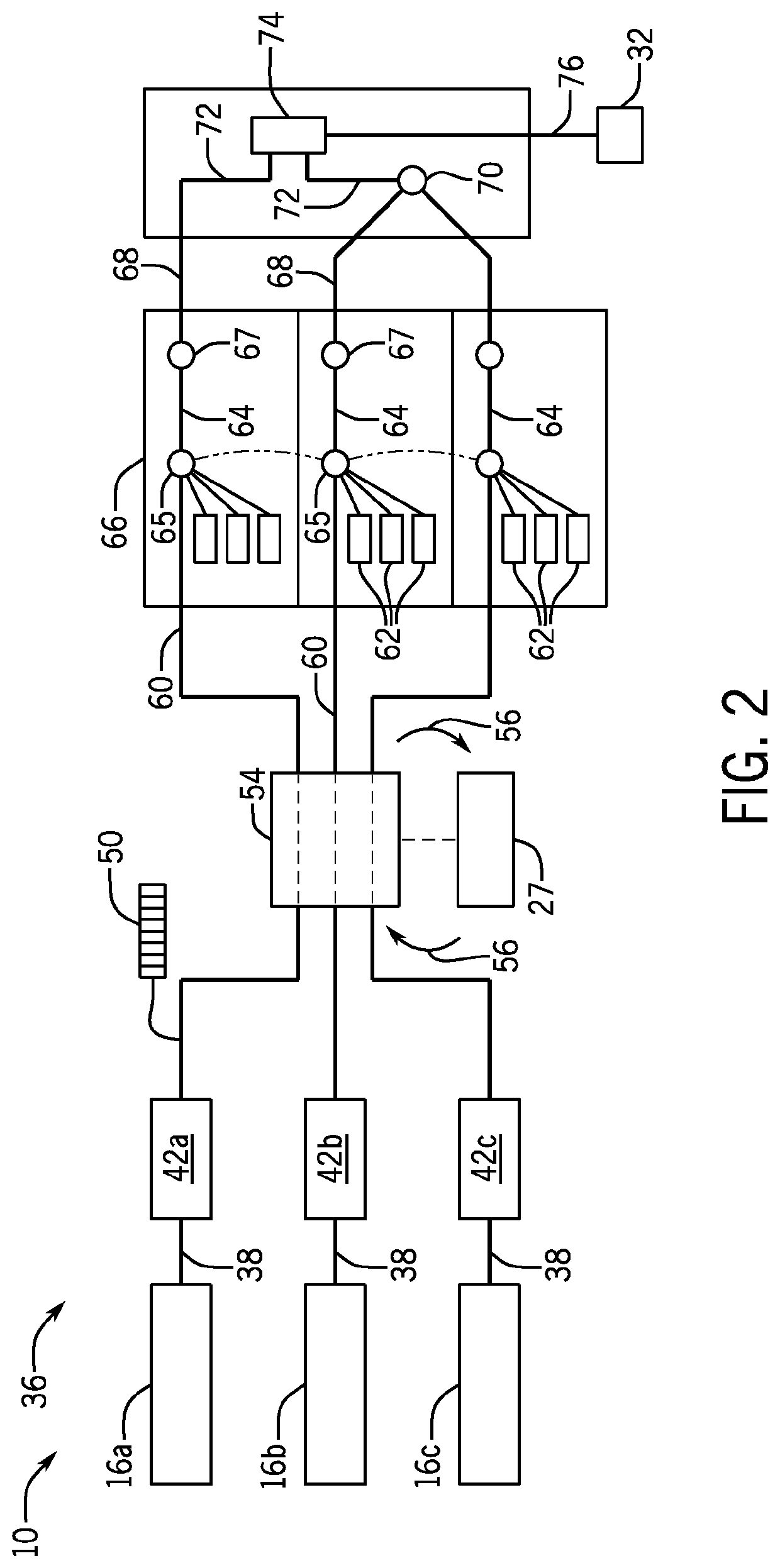Method and Apparatus using Blended Biometric Data
a biometric and blended technology, applied in the field of computer systems using biometric sensors, can solve the problems of inability to learn any information, inconvenient and difficult for authorized users to memorize and enter, and inability to use passwords to learn information,
- Summary
- Abstract
- Description
- Claims
- Application Information
AI Technical Summary
Benefits of technology
Problems solved by technology
Method used
Image
Examples
Embodiment Construction
[0043]Referring now to FIG. 1, a secure computing device 10, for example, a cell phone may provide a front touchscreen 12 for outputting graphical information or accepting user commands and a radio subsystem 14 providing wireless communication with the Internet, GPS satellites, and cell phone systems. As well as the sensor implemented by the touchscreen 12, the secure computing device 10 may include many additional sensors such as cameras, structured light projectors (for depth sensing), fingerprint sensors, accelerometers, microphones, and the like, each of which may provide for biometric information to authenticate the user as will be discussed below.
[0044]The secure computing device 10 may further include a computer subsystem 20 operating on data 22 and executing programs 24 (including an operating system and application programs) held in electronic memory 27. The electronic memory 27 in turn may include random-access memory and read-only memory (firmware) accessed by a memory ma...
PUM
 Login to View More
Login to View More Abstract
Description
Claims
Application Information
 Login to View More
Login to View More - R&D
- Intellectual Property
- Life Sciences
- Materials
- Tech Scout
- Unparalleled Data Quality
- Higher Quality Content
- 60% Fewer Hallucinations
Browse by: Latest US Patents, China's latest patents, Technical Efficacy Thesaurus, Application Domain, Technology Topic, Popular Technical Reports.
© 2025 PatSnap. All rights reserved.Legal|Privacy policy|Modern Slavery Act Transparency Statement|Sitemap|About US| Contact US: help@patsnap.com



